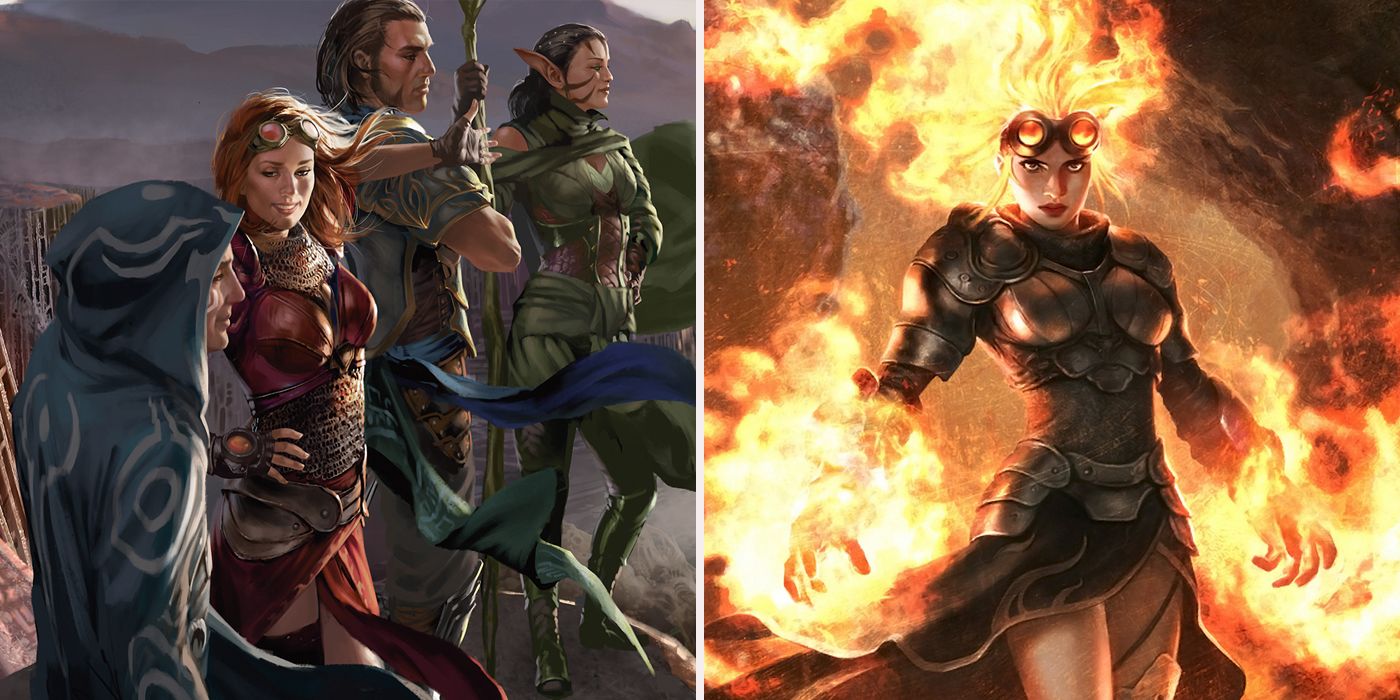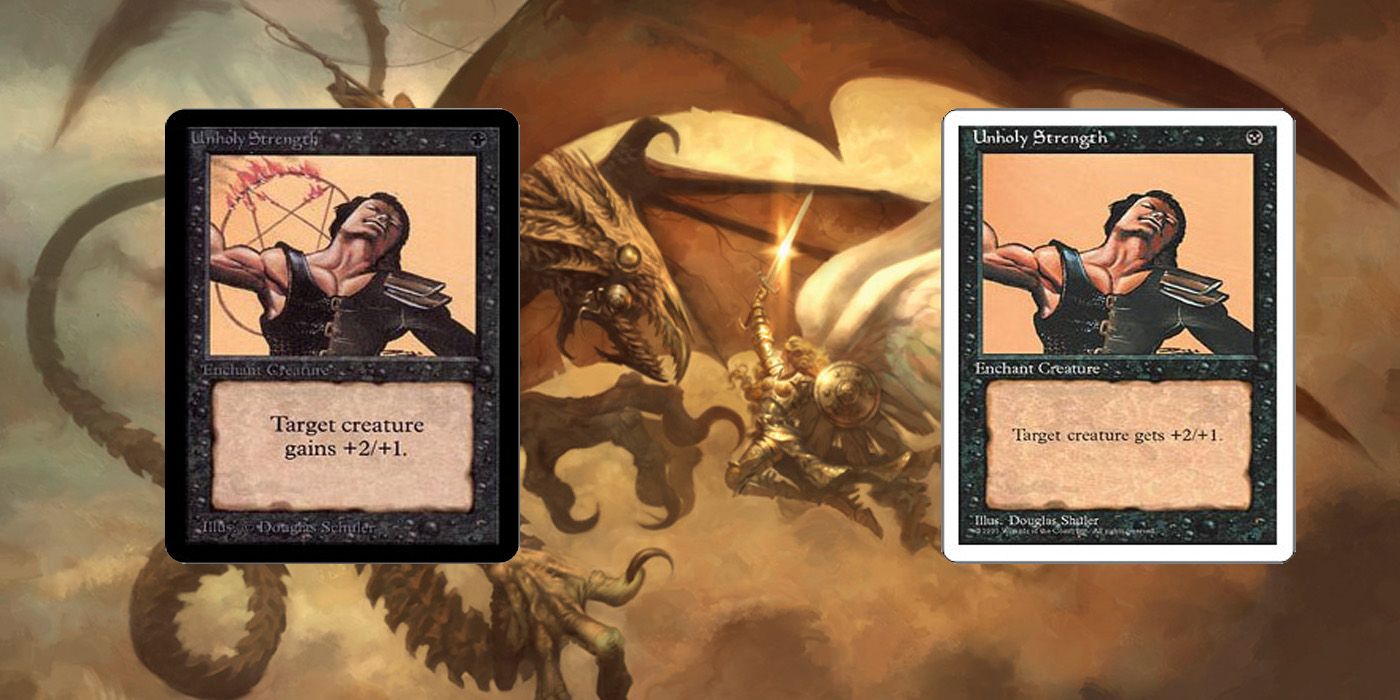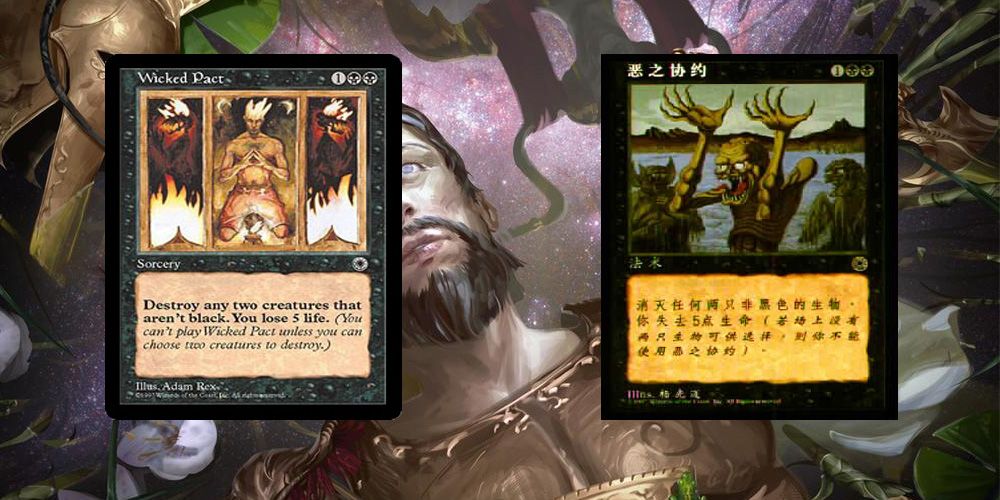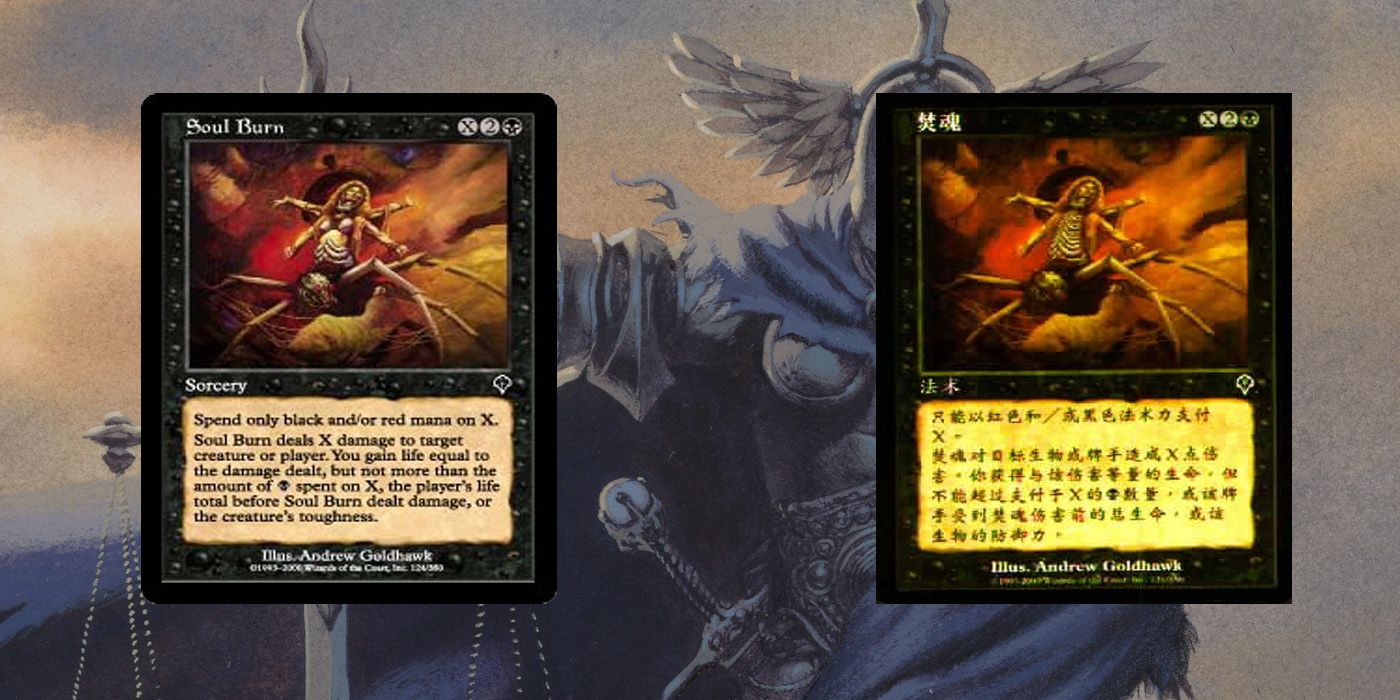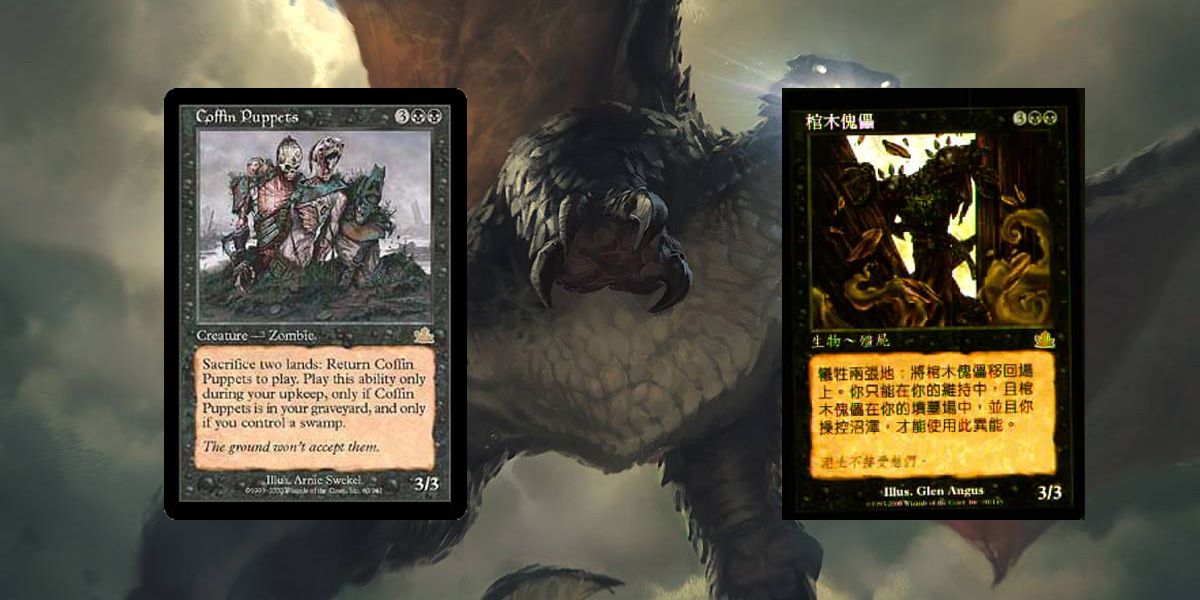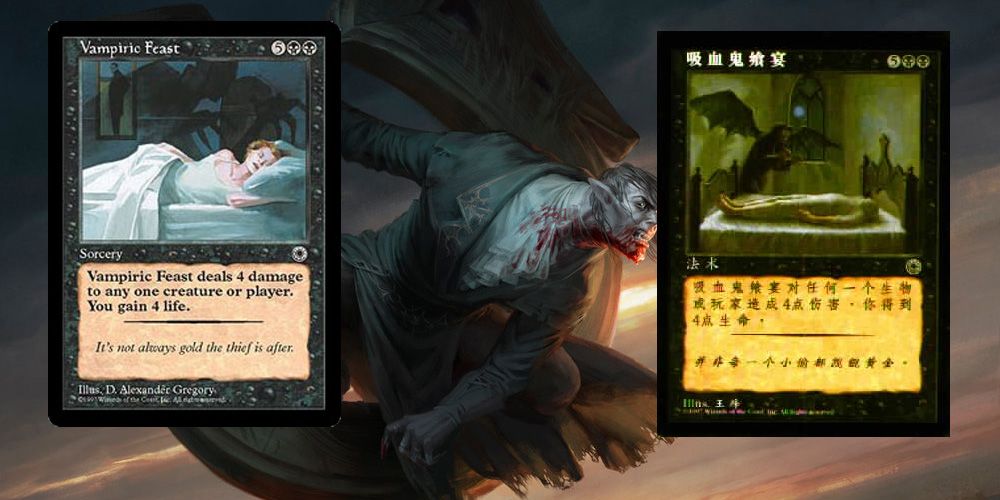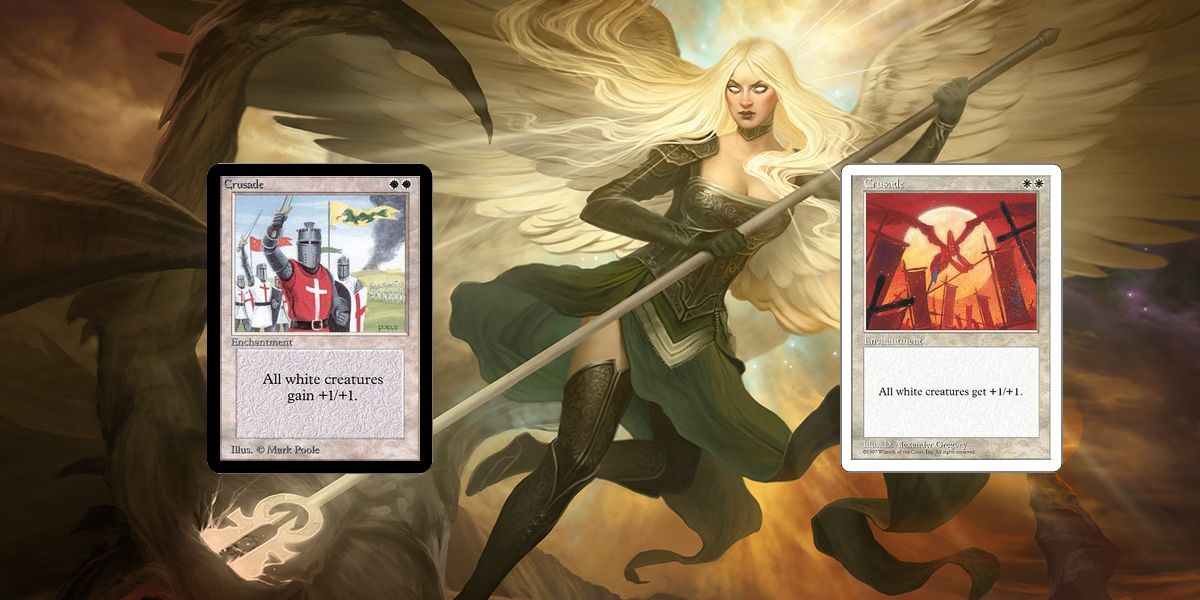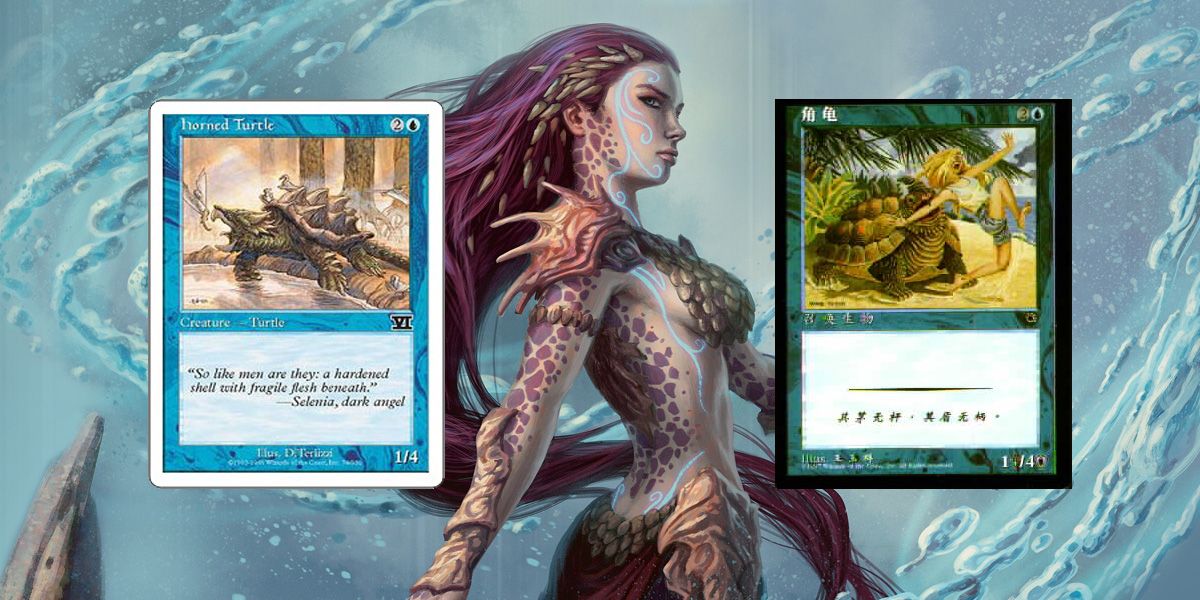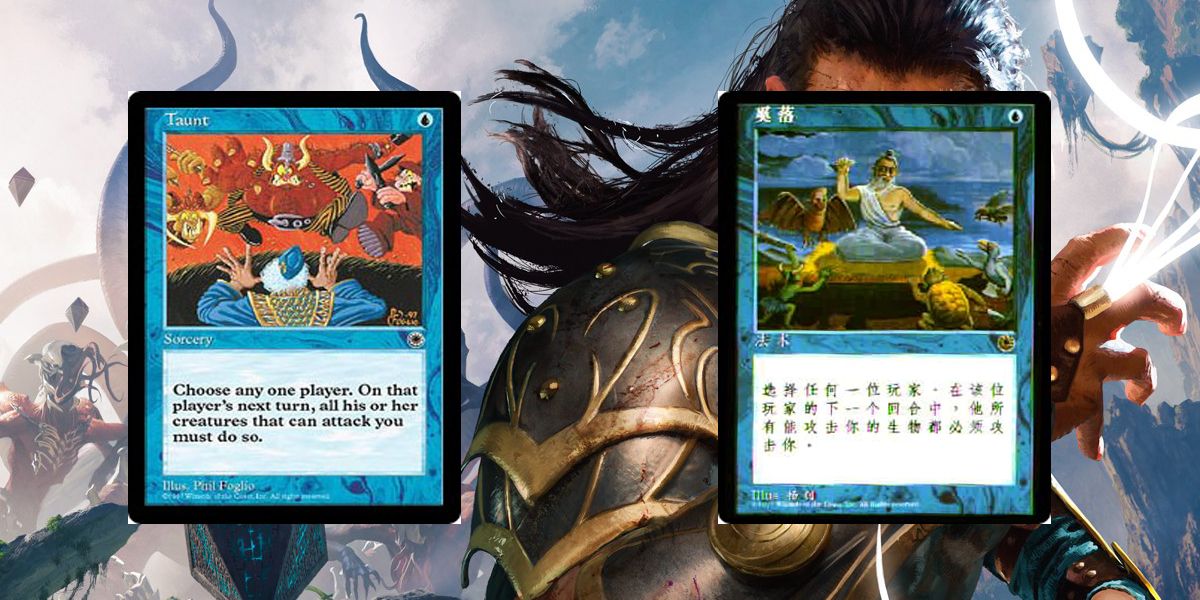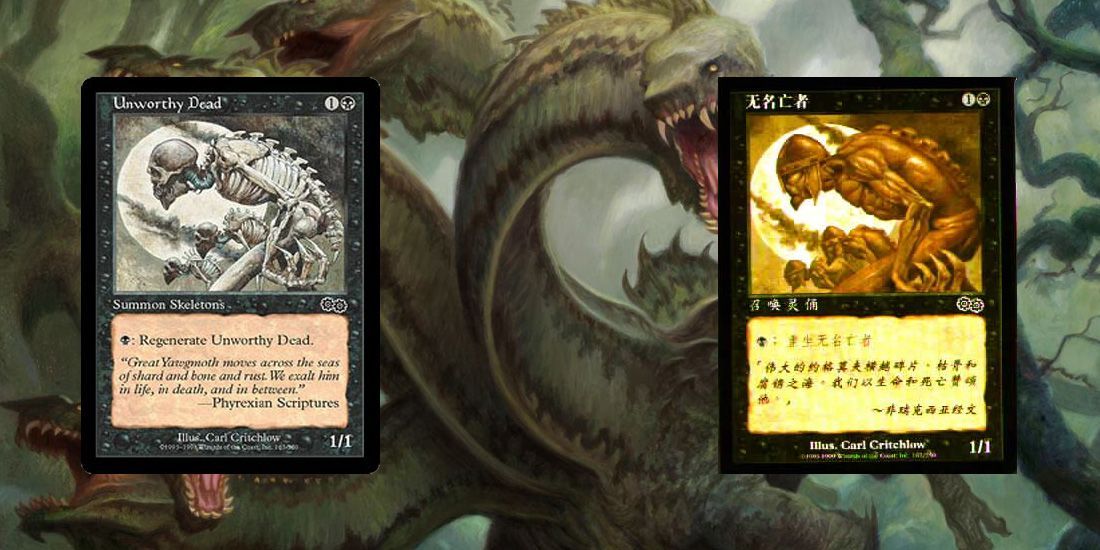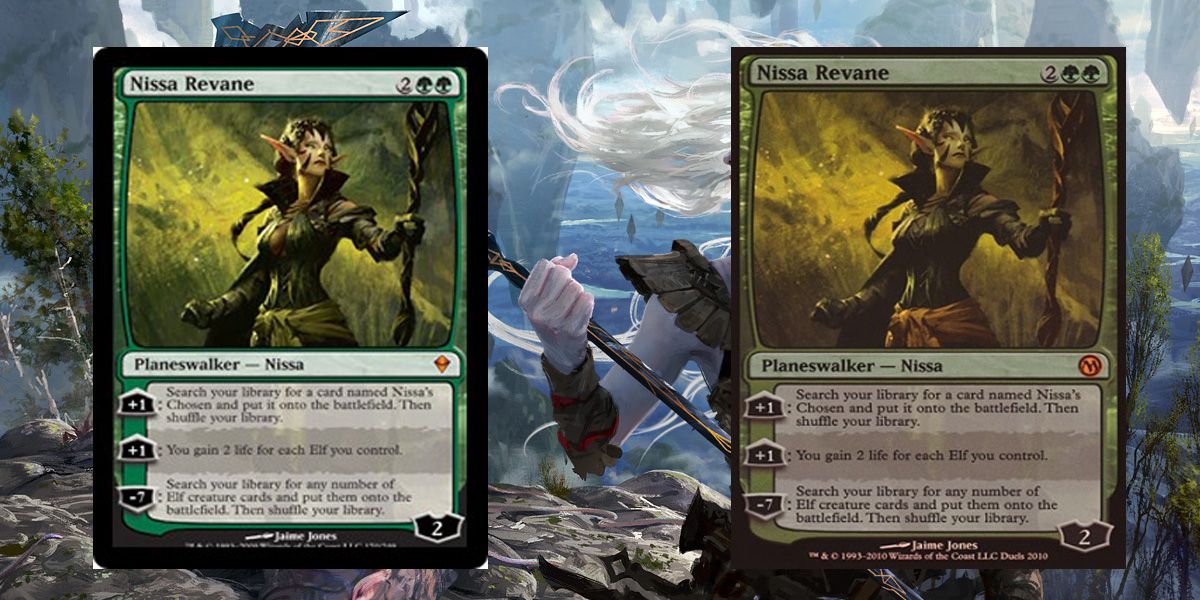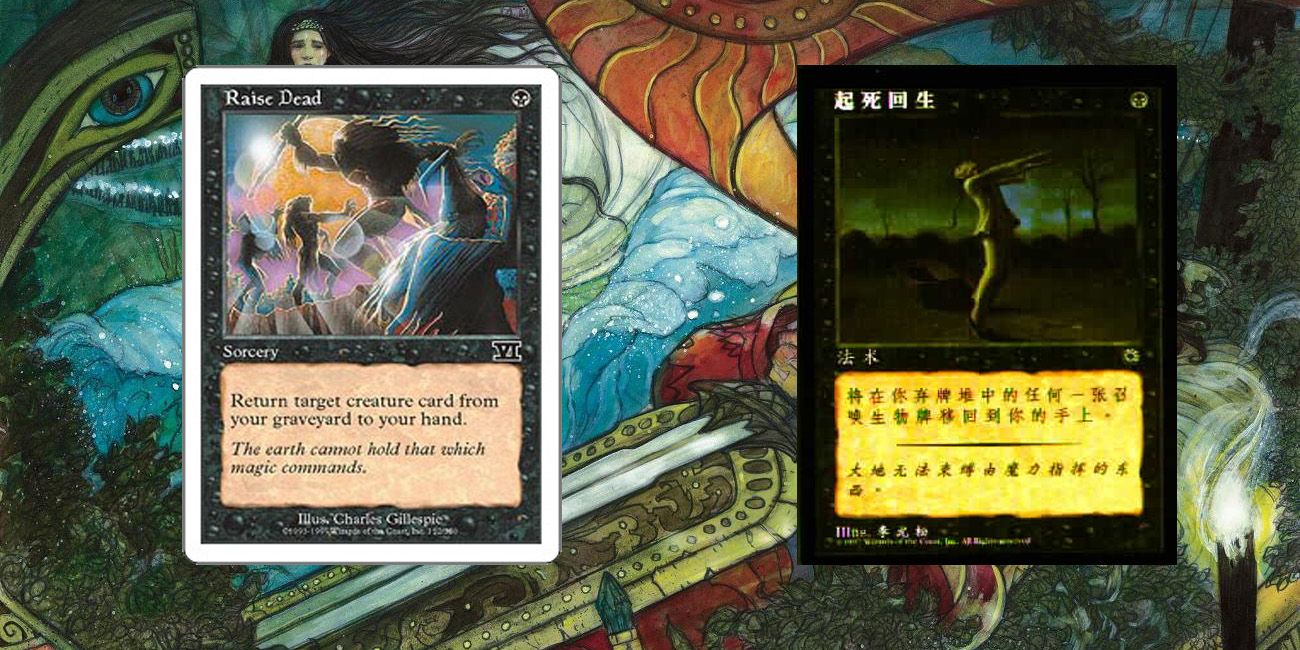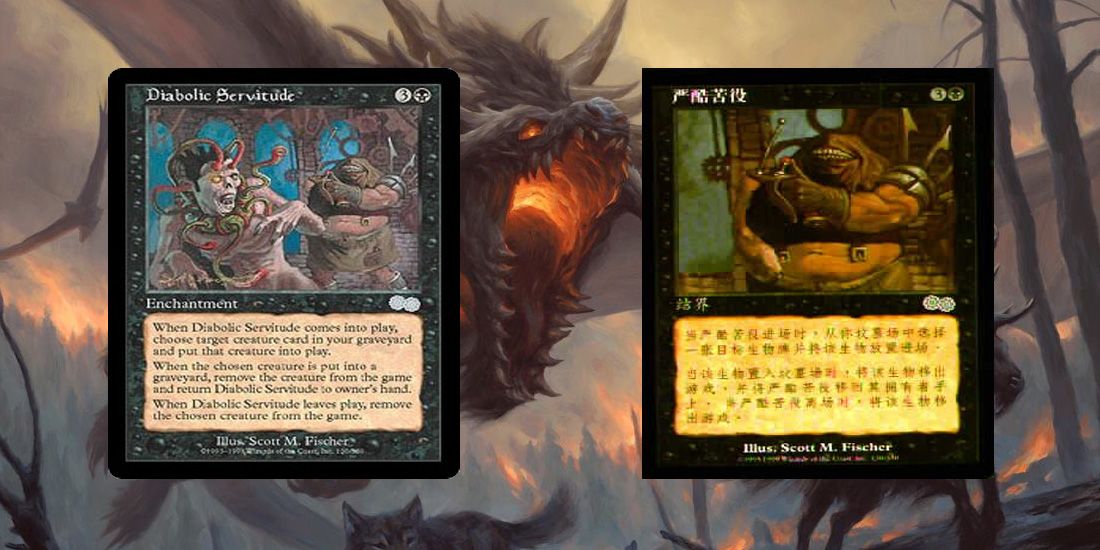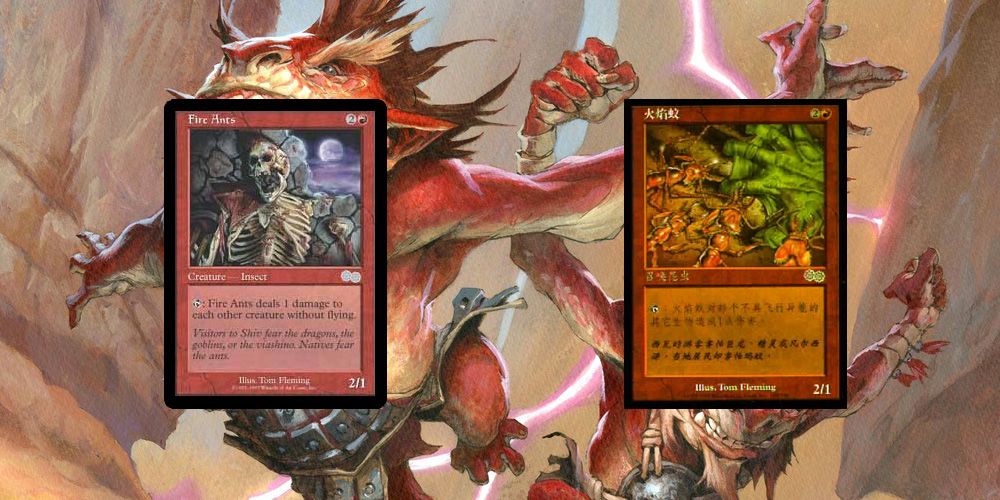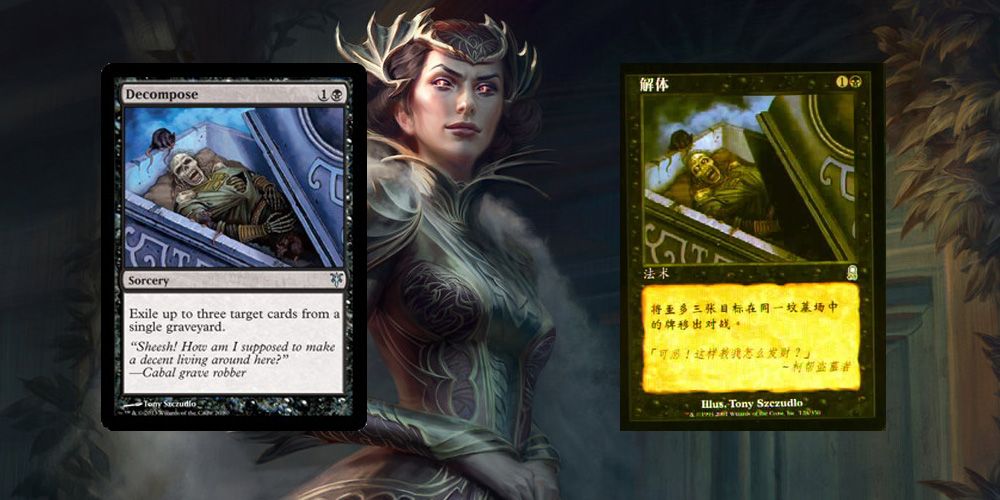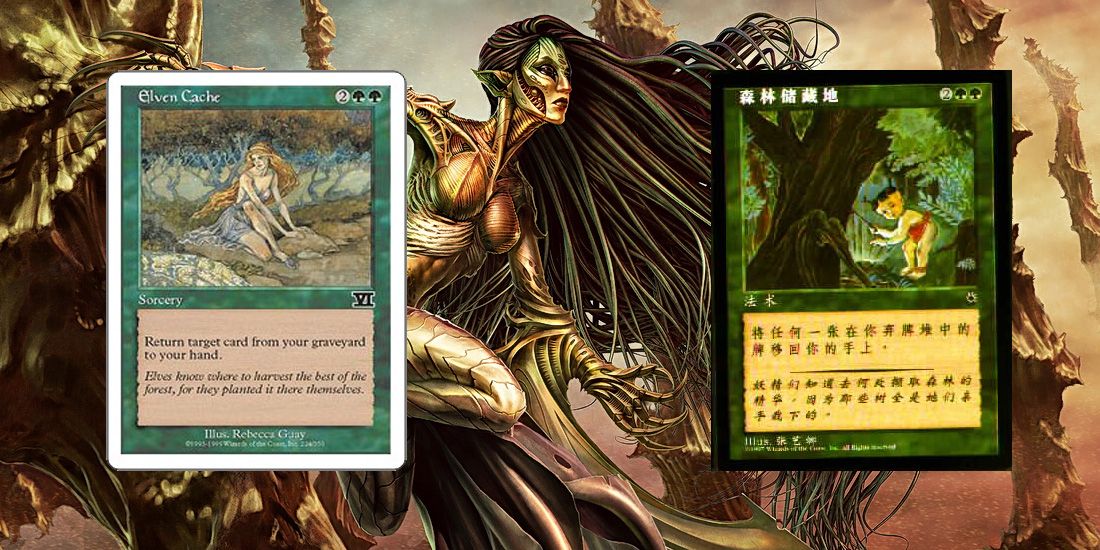It didn't take long for Magic: The Gathering to acquire a huge audience across the globe. The game was simple to learn, yet advanced enough to accommodate high-level strategies and tactics. Game stores across the world were soon hosting Magic: The Gathering tournaments, with midnight releases being held for the latest sets.
With all of the fame came a new layer of added scrutiny. Parents began voicing concerns over the content of the game, such as the demons and sacrifice that often appeared on the black cards.
Wizards of the Coast were wary of facing the same kind of backlash that Dungeons & Dragons faced upon release, so they started to censor the cards that caused offense. There was also the case of cards needing to be censored in foreign markets, due to the different sensibilities of countries such as China.
We are here today to look at the Magic: The Gathering cards that needed to be changed in each region.
From the removal of a burning pentagram to the horrific replacement for a scantily clad lady, here are 15 Magic: The Gathering Cards That Needed To Be Censored!
15. Unholy Strength - The Burning Pentagram
One of the big issues facing Wizards of the Coast when it came to complaints about Magic was imagery pertaining to devils and unholy rituals. This was a huge problem with the black cards, as those commonly saw themes related to death and bloodshed.
Parents and schools across America had let their concerns be known to Wizards of the Coast, which convinced them to tone down the imagery on the black Magic cards. One way in which this happened was the removal of pentagrams from certain cards, as these are often associated with Satanism. The most obvious case of censorship happened to Unholy Strength, which originally depicted a man standing in front of a burning pentagram.
Unholy Strength was censored in the fourth edition of Magic: The Gathering so that the burning pentagram was removed. Now the card just looks like a guy at a rave who has taken too much ecstasy.
14. Wicked Pact - The Satanic Elements
The international market that received the most changes to Magic: The Gathering cards was China. There are certain visuals that are considered to be taboo there, which includes depictions of witchcraft and the human skeleton. This has caused many video games to be censored in China, as skeletons are one of the most popular choices by developers to be used as villains.
The first censored Chinese Magic: The Gathering card we will look at today is Wicked Pact. The reason why it was changed was most likely due to its depiction of an unholy ritual, as well as the two flags bearing images of skeletons.
The artwork was changed to a couple of weird swamp monsters having a shrugging competition in their local marsh. How the artwork on the censored card reflects the use of the spell (destroy two non-black creatures) is unclear. It's possible that you are hiring the two monsters in the back and the guy in the front is their manager, with his hands out waiting for his ten-percent cut.
13. Soul Burn - The Bare Drider
Magic: The Gathering owes some of its terminology and monster designs to Dungeons & Dragons. It didn't have to owe them for long, as Wizards of the Coast bought all of the rights for Dungeons & Dragons in 1997 when it looked like TSR was about to go bankrupt.
The monster that appears on the Soul Burn card greatly resembles a creature from Dungeons & Dragons called a Drider. These are Drow (dark elves) that have been transformed into horrific spider hybrids as a punishment for displeasing a priestess of Lloth.
It seems that the design of the Drider was too explicit for the Chinese market, as the color of her clothes could be mistaken for being her skin, making her seem topless. The Chinese version of this card added a suit of flat armor over her top, which removes all traces of her breasts and manages to obscure her gender.
12. Coffin Puppets - The Gruesome Monsters
The creator of Coffin Puppets likely only gave it such gruesome artwork because they knew no one would actually use the card in their deck. Sacrificing two lands for a 3/3 creature is a horrible deal in most situations, considering how important lands are.
This is even more of an issue for black cards, as there are a ton of ways to return black monsters from the graveyard. It is one of the main gimmicks of the color.
The rotting corpses and bare bones of Coffin Puppets would have been a huge n0-no in China, which is why the artwork was changed. Coffin Puppets actually received new artwork for all of its releases in Asia, as the artwork was considered to be too much.
The new art for Coffin Puppets depicts a monster opening up a coffin and revealing a tentacle monster within. What he plans to do with the corpse of the tentacle monster is best left to the imagination.
11. Vampiric Feast - Trading A Lady For A Mummy
The depiction of a vampire sneaking up the stairs to feast on an unwary woman dates all the way back to Nosferatu and is one of the most copied and parodied scenes from the movie.
Vampiric Feast is another example of a Nosferatu homage, as the shadow strongly resembles Count Orlok. It's also a decent card, as it allows you to take out an enemy or deal damage to another player, whilst also healing yourself. It would be a staple if the cost were lower.
Vampiric Feast had its artwork changed in China. This was most likely due to the picture of the lady in the thin nightgown who is about to be attacked by a monster. The person in the Chinese version of the card appears to have already tangled with a vampire, as they are covered head to toe in bandages, while a demonic creature waits to feast on them.
The new version of Vampiric Feast looks like the Babadook is visiting one of his friends in the hospital.
10. Crusade - No Crosses
You would think that people would be most offended by depictions of violence and nudity in a game that might be played by children. There is actually a lot of censorship when it comes to religious iconography, which can be seen as just as offensive as blood or sex to some people.
The Legend of Zelda series has commonly been edited in this regard, as the Japanese versions of the games tend to use a lot of names related to religion which need to be changed for their international release.
The Magic: The Gathering card called Crusade was a victim of the same kind of scrutiny that was given to Unholy Strength. In Crusade's case, it was the Christian crosses that were the source of the controversy. The artwork of the card needed to be changed to a series of banners, in order to avoid further issues with the game.
9. Horned Turtle - The Comedy Monster
It's hard to pinpoint why exactly Horned Turtle was censored. There have been several different versions of the card released and the artwork on all of them is relatively tame. They all just depict a big turtle sitting on a beach in various ways. One of them includes an island native in the background, but is that really considered to be offensive in the Chinese market?
The Chinese version of Horned Turtle is a lot more silly than the others that were released in other countries. It features the turtle biting a blond person (it's hard to tell the gender) who is dressed like a surfer.
This version of the card is way more objectionable than the others, as it shows the Horned Turtle actually biting someone who is attempting to run away from them. Then again, it was their fault for getting so close in the first place.
8. Taunt - Devil VS Monk
There are some instances when the altered artwork for a card is a marked improvement over the original. This is no slight against Phil Foglio, as he is an incredibly talented artist who worked on lots of different Magic cards over the years, but his jokey devils are no match for the might of an awesome monk fighting off monsters.
Taunt is a blue card that forces the opponent's monsters to attack. The original artwork shows a literal depiction of the spell's effect, as a blue-clad wizard is taunting a couple of monsters into running at him. The reason this card was censored was most likely due to the creature in the middle, as its horns and red skin make it look like a devil.
The Chinese version of Taunt is far more impressive. A monk is about to take down a bunch of monsters that are sneaking up on him. His taunt is probably linked to how awesome he looks compared to their lame designs.
7. Unworthy Dead - Flesh Paint
World of Warcraft is absolutely massive in China, to the point where the box office results from the one country alone were enough to turn the movie into a success after it had flopped in America. This is despite the fact that the Chinese version of World of Warcraft is heavily censored, as all of the undead enemies (of which there are a lot) needed to have their bones covered up.
Magic: The Gathering has been enduring that kind of censorship for a long time. One of the biggest examples of this happened to Unworthy Dead, which was a basic black monster that depicted a group of skeletons in its artwork. The Chinese version of the card had flesh painted onto the skeletons, in order to make them look like zombies.
The tracing job that was done on the skeletons is pretty poor, as they copied over the spine without filling in the spaces. The Unworthy Dead now look like dinosaur hybrids.
6. Nissa Revane - Microsoft Closing Windows
The artwork for the Planeswalker called Nissa Revane was censored because of a complaint made by the ESRB, rather than anything to do with the card game or Wizards of the Coast.
There was a video game version of Magic: The Gathering released in 2009 for the PlayStation 3, Xbox 360, and Windows. It was called Magic: The Gathering - Duels of the Planeswalkers and it featured several of the Planeswalker characters that appear in the card game.
Nissa Revane featured prominently in the promotional artwork for the game, which used the picture from one of her cards. The ESRB told the developer to change it, as the middle of her outfit was cut out and was seen as too revealing.
Magic: The Gathering - Duels of the Planeswalkers was a T-rated game, which means that the small amount of skin on show shouldn't have been a problem. The ESRB may have been concerned due to the fact that Magic has a larger following among kids and teens than most games that are released with a T-rating.
5. Raise Dead - Party Or Hop?
Raise Dead is one of the original black cards in Magic: The Gathering. It has been in the game since the first set and has seen numerous reprintings in later editions. Raise Dead represents black's whole gimmick of being about necromancy and deals with the devil, as it allows you to return a creature who has been slain back to your hand for the cost of a single mana.
There are several different artworks for the various versions of Raise Dead that have been released over the years. These have almost always featured skeletons in some capacity, so it should come as no surprise that the Chinese version of the card had new artwork made for the Raise Dead card.
The Chinese version of the card depicts a zombie-like creature in a weird pose. This is actually the Asian version of a vampire, which is known as a Jiangshi. These hop around with their arms out in front of them, which explains the odd pose of the monster on the Raise Dead card.
4. Diabolic Servitude - Cropping The Zombie
It's clear that the people responsible for the Chinese versions of the Magic: The Gathering card care a great deal about the artwork. The edits that have been done were generally well-made and clearly took a lot of work to accomplish. You also have cards that feature entirely new artwork, which likely wasn't cheap to commission.
The exception to this is Diabolic Servitude, where they literally zoomed in and cropped out a picture. Diabolic Servitude allows you to return a creature from the graveyard to the field, with this card attached to it as an enchantment.
The artwork for Diabolic Servitude features a gruesome zombie that has been returned to life by an even more hideous person. The Chinese version of the card cropped out the zombie and zoomed in on the mad scientist. This change makes the artwork no longer match the name or effect of the card, as it now just shows a weird monster holding a joystick.
3. Fire Ants - No Bones, Just Ants
Now we come to the only red card on this list. The red monsters and spells generally don't show the vicious violence of the black cards or the religious iconography of the white ones. Red monsters are usually stock fantasy creatures (like dragons or goblins), or steampunk-style vehicles and robots.
One red card needed to be changed in China, due to the fact that it depicted a human skeleton. There is also the implication that the human in questions had his body devoured by ants. The card in question is Fire Ants, which depicts the insects in question devouring the flesh from a human body.
The Chinese version of the card featured a whole new piece of artwork, as there really wasn't any way to censor the card without making it worse. The new version of Fire Ants featured a picture of the insects in question as they feast on the nails of the hand of a goblin-like creature.
2. Decompose - The Edit Made It More Gruesome
There are some instances where censorship only makes something more gruesome. This was certainly the case with the Decompose card, as the Chinese edit made it even more disturbing than it originally was.
Decompose is a black card that allows you to exile up to three cards from your graveyard. The artwork reflects this by showing a corpse that is highly decomposed, which makes sense, considering the card's effect.
The Chinese version of Decompose reduced the state of decomposition, to the point where it looks far more horrific. The holes in corpse's outfit have been closed, in order to cover up the exposed ribcage beneath.
The bones of the corpse's hands are now covered by the shadow of the coffin. The corpse's skin has been given a lighter tone and it now has a set of staring eyes. These eyes are what makes the card so much worse than the original, as it makes it seem as if the body had only recently buried.
1. Elven Cache - Replace A Lady With A Monstrous Anime Baby
Magic: The Gathering has generally been good about not including scantily-clad females on the cards that are portrayed as damsels or waifs, which are an unfortunate stereotype of the fantasy genre. The warrior women of Magic: The Gathering are generally just as badass and powerful as their male counterparts.
There have been a few rare instances where Magic cards have featured scantily-clad ladies. One example of this is Elven Cache, which features a beautiful elven maiden who is wearing a dress that shows off her legs and cleavage.
The Chinese version of Elven Cache removed the elven girl, as her outfit was likely considered to be too revealing. She was replaced with a monstrous anime baby that lives in the nightmares of nerds.
This new version of Elven Cache decided to replace the elf with a version of Astro Boy who suffers from gigantism. The artwork on the Chinese version of Elven Cache is done in almost voyeuristic style, which implies that you are spying on the hideous anime child while it is changing.
---
Are there any other censored Magic: The Gathering cards that we missed? Let us know in the comments!

